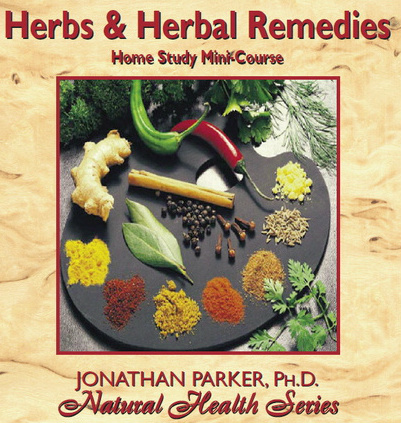Mint in Folklore and Spiritual Practices

Before diving in, please note: This post is for informational purposes only. If you’d like to know more about how we approach topics, feel free to check out our friendly Disclaimer Page.
Hey there, amazing readers! 🖐️ Just a quick note: yes, we know there are a lot of ads here. Trust us, we get it—it’s not the prettiest look, but they help us keep this blog alive and kicking. Those pesky little ads cover the costs of all the behind-the-scenes magic, from hosting and tech stuff to creating content we hope you’ll love.
We’re committed to delivering quality posts, and your support (even just sticking around despite the ads) means everything to us. So, bear with us, and thanks for helping us keep the good vibes rolling. Now, on to the fun stuff! 😉
TRANSLATE BUTTON AT THE END OF THE ARTICLE
A Quick Overview
Mint, a versatile herb known for its refreshing aroma and culinary uses, has a rich history steeped in folklore and spiritual practices.
From ancient civilizations to modern-day rituals, mint holds a significant place in various cultures worldwide.
This article delves into the origins of mint in ancient cultures, its role in traditional healing practices, spiritual significance, symbolism, and its association with rituals, ceremonies, folk magic, and witchcraft.
Explore the mystical world of mint and discover how you can incorporate this herb into your spiritual practice.
Mint: A Herb with Rich Folklore
Mint, with its vibrant green leaves and invigorating scent, has captivated people for centuries.
In folklore, mint is often associated with protection, prosperity, and healing.
It was believed that planting mint around one’s home would ward off evil spirits and bring good fortune.
The herb’s ability to flourish in various environments symbolizes resilience and adaptability, making it a favorite in gardens and herbal remedies.
Mint’s folklore extends beyond its physical attributes, delving into the realm of spirituality and mysticism, where it is revered for its mystical properties.
Origins of Mint in Ancient Cultures
The origins of mint can be traced back to ancient civilizations such as Egypt, Greece, and Rome.
In ancient Egypt, mint was used for medicinal purposes and in religious ceremonies.
The Greeks associated mint with hospitality and used it to flavor their wine and food.
Romans valued mint for its aromatic qualities and believed it had protective powers.
Mint’s presence in these ancient cultures highlights its enduring popularity and significance in various aspects of life, from healing to culinary arts.
Mint in Traditional Healing Practices
Mint has been a staple in traditional healing practices for its numerous health benefits.
The herb is known for its soothing properties and is often used to alleviate digestive issues, headaches, and respiratory problems.
Mint tea is a popular remedy for indigestion and nausea, while mint essential oil is used in aromatherapy to promote relaxation and mental clarity.
The cooling sensation of mint makes it a go-to herb for treating fevers and inflammation.
Its versatility in healing has made mint a cornerstone of herbal medicine for generations.
Spiritual Significance of Mint
In spiritual practices, mint is revered for its cleansing and purifying properties.
The herb is believed to dispel negative energy and promote positivity in the environment.
Burning mint leaves or using mint-infused water in rituals is thought to enhance spiritual connections and create a sense of peace and harmony.
Mint’s uplifting scent is said to uplift the spirit and awaken the senses, making it a popular choice for meditation and prayer.
Its association with freshness and renewal aligns mint with spiritual growth and transformation.
Mint in Rituals and Ceremonies
Mint plays a crucial role in various rituals and ceremonies across different cultures.
In pagan traditions, mint is used to attract abundance and prosperity, often placed on altars or carried in sachets for good luck.
Witches and shamans incorporate mint in spells and rituals to amplify intentions and manifest desires.
Mint leaves are sometimes scattered around a sacred space to purify and sanctify the area before ceremonies.
Its presence in rituals signifies purity, protection, and spiritual renewal.
Mint: Symbolism and Meanings
Symbolically, mint represents vitality, abundance, and protection.
The herb’s vibrant green color symbolizes growth and renewal, while its refreshing scent signifies clarity and purification.
Discover the "Healing Power of Herbs" 🌿
Mint is often associated with the element of air, representing communication, intuition, and intellect.
In folklore, mint is seen as a beacon of hope and positivity, guiding individuals towards new beginnings and opportunities.
Its presence in rituals and ceremonies is a reminder of the herb’s symbolic significance in spiritual practices.
Mint in Folk Magic and Witchcraft
Mint has long been a staple in folk magic and witchcraft for its potent mystical properties.
Witches use mint in spells for protection, prosperity, and healing.
Mint leaves are thought to attract love and abundance when placed under a pillow or carried in a sachet.
The herb’s association with the element of earth makes it a powerful tool for grounding and centering energies.
Mint is also used in divination practices to enhance intuition and spiritual insight, making it a versatile ingredient in magical work.
Mint: Protection and Purification
Mint is renowned for its protective and purifying qualities in spiritual practices.
Burning mint leaves or using mint-infused water can cleanse a space of negative energies and create a sense of peace and harmony.
Mint is often used in protection spells and rituals to ward off malevolent forces and shield against psychic attacks.
The herb’s fresh aroma is believed to dispel negativity and promote a sense of well-being.
Incorporating mint into your spiritual practice can enhance your connection to the divine and create a sacred sanctuary.
Mint in Divination and Spiritual Work
In divination practices, mint is used to enhance intuition and spiritual insight.
Drinking mint tea before a reading is thought to sharpen psychic abilities and promote clarity of vision.
Mint leaves can be added to a divination altar to amplify energies and facilitate communication with the spirit realm.
The herb’s association with the element of air makes it a powerful tool for channeling messages from the divine.
Mint’s purifying properties cleanse the mind and spirit, allowing for deeper insights and revelations in spiritual work.
Mint: Associated Deities and Spirits
Various deities and spirits are associated with mint in different cultures and belief systems.
In Greek mythology, mint is linked to the story of Minthe, a nymph who was transformed into the fragrant herb by Hades.
The Romans dedicated mint to the goddess Venus, attributing its powers of love and passion to her influence.
In Celtic traditions, mint is connected to the goddess Brigid, revered for her healing and protective energies.
Working with mint in rituals and ceremonies can invoke the guidance and blessings of these spiritual entities, enhancing the potency of your spiritual practice.
Folk Beliefs Surrounding Mint
Folk beliefs surrounding mint are diverse and fascinating, reflecting the herb’s enduring popularity and mystical allure.
In some cultures, mint is believed to bring good luck and prosperity when planted near the home.
Hanging bundles of mint over doorways is thought to ward off negative influences and evil spirits.
Mint leaves placed under a pillow are said to enhance dream recall and promote restful sleep.
These age-old beliefs underscore the deep-rooted connection between mint and the spiritual realm, where the herb serves as a bridge between the physical and metaphysical worlds.
Incorporating Mint into Your Spiritual Practice
To incorporate mint into your spiritual practice, consider using the herb in rituals, ceremonies, spells, or meditation.
Create a mint-infused water spray to cleanse your sacred space and promote positive energy.
Carry a sachet of dried mint leaves for protection and clarity of mind.
Burn mint leaves as incense during meditation or divination sessions to enhance focus and spiritual connection.
Experiment with different ways of incorporating mint into your practice to discover its unique benefits and transformative energies.
Let mint guide you on a journey of spiritual growth and enlightenment.
Conclusion
Mint’s presence in folklore and spiritual practices is a testament to its enduring significance and mystical allure.
From ancient civilizations to modern-day rituals, mint has played a vital role in healing, protection, and purification.
Its symbolic meanings and associations with deities and spirits make mint a versatile herb for enhancing spiritual connections and fostering personal growth.
By exploring the world of mint in rituals, ceremonies, folk magic, and divination, you can unlock its secrets and tap into its transformative energies.
Embrace the refreshing essence of mint in your spiritual practice and let its mystical properties guide you on a path of enlightenment and spiritual evolution.

The Enlightenment Journey is a remarkable collection of writings authored by a distinguished group of experts in the fields of spirituality, new age, and esoteric knowledge.
This anthology features a diverse assembly of well-experienced authors who bring their profound insights and credible perspectives to the forefront.
Each contributor possesses a wealth of knowledge and wisdom, making them authorities in their respective domains.
Together, they offer readers a transformative journey into the realms of spiritual growth, self-discovery, and esoteric enlightenment.
The Enlightenment Journey is a testament to the collective expertise of these luminaries, providing readers with a rich tapestry of ideas and information to illuminate their spiritual path.
Our Diverse Expertise 🌟
While our primary focus is on spirituality and esotericism, we are equally passionate about exploring a wide range of other topics and niches 🌍📚. Our experienced team is dedicated to delivering high-quality, informative content across various subjects ✨.
To ensure we provide the most accurate and valuable insights, we collaborate with trusted experts in their respective domains 🧑🏫👩🏫. This allows us to offer well-rounded perspectives and knowledge to our readers.
Our blog originally focused on spirituality and metaphysics, but we’ve since expanded to cover a wide range of niches. Don’t worry—we continue to publish a lot of articles on spirituality! Frequently visit our blog to explore our diverse content and stay tuned for more insightful reads.
Discover the "Healing Power of Herbs" 🌿
Unlock the ancient wisdom of herbal remedies with this comprehensive guide! Perfect for beginners and enthusiasts alike, this e-book dives into the powerful benefits of herbs for health, wellness, and natural healing.
Inside, you’ll find:
Easy-to-follow recipes for teas, tinctures, and remedies.
A guide to the most effective herbs for common ailments.
Tips on growing and storing your own herbs.
Transform your health naturally and embrace the healing power of nature. 🌱 Start your journey today!







